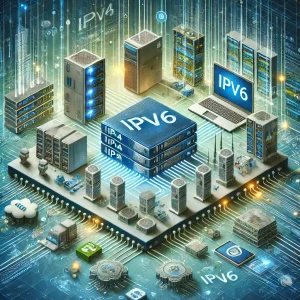
Software-Defined Networking (SDN) revolutionizes network management, operating, and engineering by separating control and forwarding functions. This approach allows direct programmability of network control and the infrastructure’s abstraction for applications and network services. Software-defined networking empowers network engineers and administrators to swiftly adapt to changing business needs through a centralized control console.
Key Components of Software-Defined Networking
The structure of software-defined networking typically involves three layers:
- Application Layer: Applications demanding network resources operate here, interacting directly with software-defined networking mechanisms.
- Control Layer: The SDN Controller, or the central nervous system of software-defined networking, resides here, bridging communication between the application and infrastructure layers.
- Infrastructure Layer: Physical switches and routers that forward traffic populate this layer, guided by software-defined networking policies.
Recent Advances in Software-Defined Networking Technologies
Enhanced Network Programmability and Automation
Software-Defined Networking significantly benefits from its programmability. It enables network administrators to manage traffic from a centralized console without handling individual switches. Machine learning and artificial intelligence now enhance SDN controllers, improving decision-making and predictive analytics to optimize network flow and performance.
Improved Network Security
Software-defined networking boosts security by enforcing centralized, uniform, and easily updated security policies. It enables microsegmentation and flow-based security, providing granular control. The programmability of software-defined networking also allows quick deployment of security patches, essential in rapidly evolving threat environments.
Advancements in Network Function Virtualization (NFV)
NFV complements software-defined networking by converting network functions from dedicated hardware into software on commodity servers. Recent NFV advancements, powered by software-defined networking, have improved the flexibility and scalability of managing network services, reducing costs.
Multi-cloud and Hybrid Cloud Networking
Software-defined networking has been crucial in developing multi-cloud and hybrid cloud environments, ensuring seamless connectivity and mobility across various platforms. These capabilities are essential for enterprises operating across different geographical locations and cloud environments. Software-defined networking technologies have evolved to better support automation and orchestration across these diverse settings.
5G and Edge Computing
The introduction of 5G has made software-defined networking a key component in managing the increased data volume and speed. Software-Defined Networking optimizes the bandwidth and latency demands of 5G. Additionally, as edge computing extends processing to network edges, software-defined networking becomes essential for managing new data points and their generated data.
Challenges in Implementing Software-Defined Networking
Software-defined networking offers numerous benefits but also presents several challenges:
- Interoperability with Legacy Systems: Many organizations use traditional network hardware and software that are not fully compatible with software-defined networking solutions.
- Scalability: Managing a vast network centrally through software-defined networking can become complex and require sophisticated algorithms and configurations.
- Security Risks: While Software-Defined Networking can enhance security, it also introduces new vulnerabilities, particularly in the control layer, which could jeopardize the entire network if compromised.
The Future of Software-Defined Networking
Software-defined networking is poised for continuous evolution. Areas like intent-based networking, where the network can interpret and implement business objectives, and advancements in AI and ML are set to make software-defined networking more intuitive and autonomous.
Conclusion
The advances in software-defined networking have greatly increased network flexibility and manageability. As businesses continue to navigate a digitally-driven world, the role of Software-Defined Networking in supporting new computing paradigms and enhancing network security and performance will only expand. The future of networking looks toward further automation, intelligence, and integration, with software-defined networking at the forefront of these efforts.





